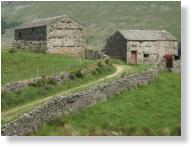Phase I / Extended Phase I Habitat Survey or Scoping Survey
A Phase I Habitat Survey is a simple assessment technique for vegetation and other features within your site and acts as the primary means of evaluation on which further surveys may be based.
An Extended Phase I Habitat Survey is simply the above procedure that includes an assessment of habitats for protected species and species of conservation concern. This is the most useful initial assessment for any site and will outline evidence of protected species or the potential for these to occur and will satisfy most requests for assessment by planning authorities. Local Planning Authorities must also make wildlife a material consideration under Planning Policy Statement 9 (PPS9).

These assessments can form the scoping stage of more comprehensive site assessments such as Ecological Impact Assessments (EcIA).
If your interests in a site are prospective then you will need to know the risks to your project from ecological factors before you purchase the site or involve other professional guidance. Your proposed site may contain habitats or species of conservation concern.
National Vegetation Classification (NVC)
A detailed system of classification of habitat types found in the UK, the procedure will define the habitats within your site. This form of comprehensive study is often required for large-scale development proposals where impacts are potentially high or extensive, or where sensitive habitats are at risk.
Hedgerow Survey
Due to the loss of valuable hedgerows historically, these surveys as required under the Hedgerow Regulations 1997. Hedgerows form a network of dense habitat throughout the countryside that enables wildlife to move through the landscape, which in the UK is predominantly open and agricultural. With woodland being a small component of the landscape, hedgerows often provide cover for birds, mammals and plant species associated with woodland itself.
Removal of hedgerows will alter the quality of the landscape in the immediate area, and depending on the prevalence of other woodland or scrub habitat, removal may have impacts on a far wider scale.
We can evaluate the quality of hedgerows on your site and if they are of significant value we will advise you how best to manage the removal or modification work.
Invasive Species
Invasive species may be native to the UK such as Bracken, or alien such as Japanese knotweed and Rhododendron. In all instances they can cause significant damage to habitats and sometimes property. Japanese knotweed in particular can damage hard engineering like tarmac and concrete, resulting in expensive repair or rebuild work. If Japanese knotweed is disturbed or moved from the site this becomes controlled waste and infringement of legislation brings heavy penalties. You must not intentionally or recklessly cause this weed to grow in the wild.
Correctly dealt with these species may not be a serious problem and tried and trusted methods can be employed to eradicate invasive weeds from your site. All works can be fully supervised to prevent or minimise damage to natural habitats.

